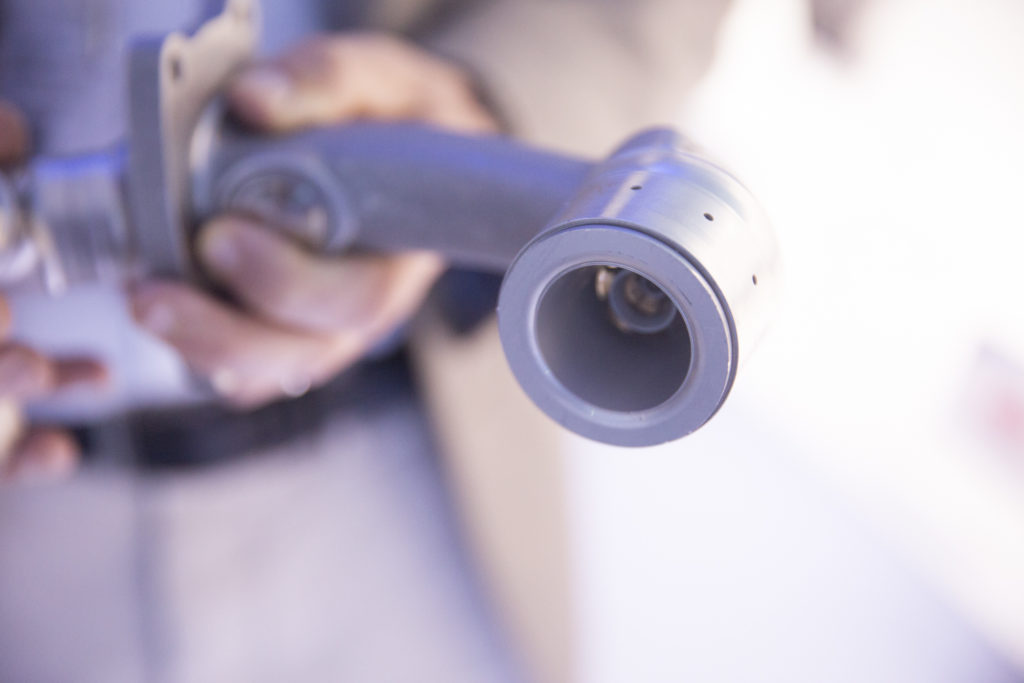![[Image: Adam Senatori for GE Reports]](https://fabbaloo.com/wp-content/uploads/2020/05/nozzle2-1024x683_img_5eb0a595d6624.jpg)
Milestones are mounting in additive manufacturing, with production parts hitting new highs.
The latest comes from GE Aviation, which this week marked a milestone with its 30,000th fuel nozzle produced via 3D printing.
The fuel nozzle, for what GE describes as the commercial aviation market’s best-selling engine, the LEAP, has long stood as a testament to the possibilities of additive manufacturing. Part consolidation, lighter weight, enhanced fuel efficiency: pick your metric, the 3D printed fuel nozzle has proven its worth with verified numbers in this qualified application.
With more than 16,300 current orders and commitments for the LEAP engine — each of which contains as many as 19 fuel nozzles — we’re talking about a significant application. That significance comes through both these numbers and the fact that these 3D printed parts fly. In planes. With people on them. Flight qualification is a critical consideration for any new aviation parts, and the relative speed with which these fuel nozzles were designed, made, qualified, and flying isn’t something to take for granted, no matter how many times many of us have seen them appear in speakers’ presentations (including mine). Confession: one of the times I’ve laughed the most during a conference session was when a slide showed the fuel nozzle and someone in the audience audibly said, “That again?”
The reality is that it’s a compelling story, and one GE is fond of telling.
![[Image: GE Aviation]](https://fabbaloo.com/wp-content/uploads/2020/05/LEAP-1-COVER_img_5eb0a59663148.jpg)
Aerospace applications are often in focus when it comes to 3D printing because of the critical nature of end-use parts; failure is not an option. The many benefits of lighter-weight, consolidated-build, unique-geometry components are immediately moot should the result not meet or exceed regulatory requirements. 3D printing is a young technology; the fuel nozzle is a relatively young design; it’s being produced in significant quantities.
The fuel nozzle tips are 3D printed at a GE Aviation plant in Auburn, Alabama, where production began in 2015. More than 40 metal 3D printers are now on-site producing the parts.
Along with the flight qualification, that these are being serially produced — to the landmark tune of 30K now — is notable. Milestones are showcasing the viability of additive manufacturing, and highlighting not only operability but major production efforts underscores GE’s commitment to the technology. Not that anyone was doubting it, as the company continues to impress with investments and introductions.
![[Image: GE Aviation]](https://fabbaloo.com/wp-content/uploads/2020/05/30K-Low-rob-fix-768x576_img_5eb0a596b56fd.jpg)
GE Aviation Auburn’s plant leader, Ricardo Acevedo, noted of the milestone announcement:
“This milestone isn’t just about reaching production of 30,000 fuel nozzle tips. The team should also be proud for their role in helping prove additive technology works in mass production for our business and others who buy GE technology.
We’re leading the way of mass producing additive parts for the industry. We’re continuously looking at ways of expanding the possibilities for the business.”
So, to my fellow conference-goer from a year or two ago: yes, that again. And again and again x30,000.
Via GE Aviation











Eric Haddad is the founder and Pilot in Command of 3DAeroventures, a Texas-based outfit specializing in 3D printed RC aircraft.